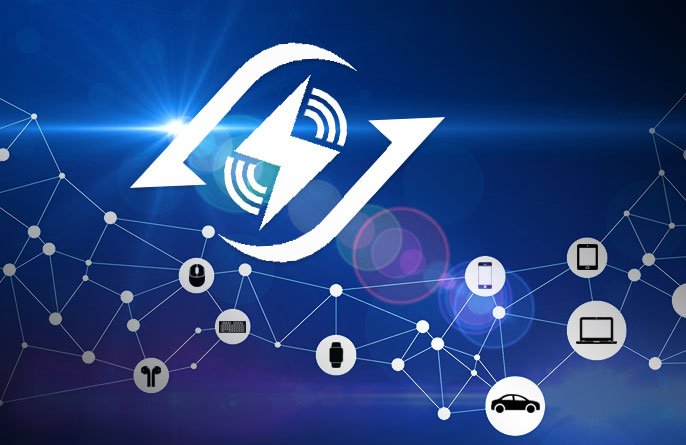Wireless power transfer technology has revolutionized the way we charge our devices. From cell phones to electric vehicles, the ability to charge without plugging in a cable has become increasingly popular. But how far can this technology take us? Will we ever be able to charge a car without the need for physical connection, or transmit power to remote locations without the need for traditional infrastructure? In this article, we will explore the average distance for charging with wireless power transfer devices and delve into the future possibilities of this technology.
Understanding Wireless Power Transfer
Before we dive into the average distance for charging, let’s first understand the two main approaches to wireless power transfer: closely coupled power transfer and radiative coupling.
Closely coupled power transfer involves the formation of an electric or magnetic field between a transmitter and a receiver. This field is then used to transfer energy from one device to another. Examples of closely coupled power transfer include induction hobs, electric toothbrushes, and wireless phone chargers. These devices create an electromagnetic field in the transmitter and induce an electric current in a nearby receiver, enabling energy transfer.
On the other hand, radiative coupling involves directing a beam of energy, often in the form of high-frequency radio waves, to a receiver that is highly tuned to capture as much of that energy as possible. This approach requires alignment between the sender and the receiver to ensure efficient energy transfer.
The Importance of Alignment in Wireless Power Transfer
Alignment plays a crucial role in the efficiency of wireless power transfer. For closely coupled schemes, such as induction hobs, precise alignment between the transmitter and the receiver is necessary for optimal energy transfer. Even a slight misalignment can result in reduced charging efficiency. As users of induction hobs may have experienced, moving a pan even slightly off the marked center of the heating ring can cause it to stop heating immediately.
Similarly, in wireless charging of electric vehicles, getting the alignment right between the transmission coil on the ground and the pickup coil under the car is essential. Poor alignment can lead to significant power losses, with energy dissipating as useless heat in the interface between the charger’s transmission coils and the vehicle’s receiver.
To address this challenge, standards for wireless charging of electric vehicles, such as the SAE J2954 standard, have been developed. This standard defines criteria for interoperability, electromagnetic compatibility, EMF, performance, safety, and testing of wireless power transfer systems. It also provides guidelines for alignment to ensure efficient energy transfer between the charger and the vehicle.
Average Distance for Charging with Wireless Power Transfer Devices
The average distance for charging with wireless power transfer devices varies depending on the technology and application. Closely coupled power transfer, which includes inductive charging, typically has a limited range. Inductive charging pads for smartphones, for example, require close proximity between the pad and the device for effective charging. This means that users need to place their devices directly on the charging pad for it to work.
For electric vehicles, wireless charging pads installed on the ground require proper alignment with the pickup coil under the car. The SAE J2954 standard provides guidelines for aligning the vehicle with the charging pad, ensuring efficient energy transfer. However, even with these standards in place, the range for wireless charging of electric vehicles is still limited.
Radiative coupling, on the other hand, offers the potential for longer-distance wireless power transfer. Companies like Ossia are developing innovative solutions that use beamforming technology to deliver power wirelessly over longer distances. Ossia’s approach involves a power transmitter sending out a regular signal to synchronize with compatible devices nearby. The receiver devices then send back a beacon signal that announces their presence and power needs. The power transmitter uses the phase of each beacon signal to determine the most efficient transmission path, adjusting the phase and power output of its antennas to steer a coherent beam of energy to the receiver.
With this technology, the average distance for charging can be significantly extended, as the power can be delivered to devices even when they are not in the line of sight of the transmitter. This opens up possibilities for charging devices anywhere within a defined volume, without the need for close coupling and precise alignment. Ceiling smoke alarms, for example, would never need a new battery, and robot vacuum cleaners could operate without returning to a bulky docking station.
The Future of Wireless Power Transfer
The average distance for charging with wireless power transfer devices is constantly evolving as new technologies and innovations emerge. While closely coupled power transfer has its limitations in terms of range, radiative coupling offers the potential for long-distance wireless charging.
As the technology continues to advance, we may see significant improvements in the average distance for charging. Research and development efforts are focused on enhancing alignment mechanisms, developing sensors to assist with alignment issues, and implementing thermal management solutions for high-power charging. These advancements will contribute to a future where devices can be powered wirelessly anywhere within a specified volume, transforming the way we interact with technology.
In conclusion, wireless power transfer has already made notable advancements in charging technology. The average distance for charging varies depending on the approach used, with closely coupled power transfer having a more limited range compared to radiative coupling. However, with ongoing research and development, the average distance for charging is expected to increase, enabling efficient wireless power delivery to devices over longer distances. As we continue to push the boundaries of wireless power transfer, the possibilities for untethered charging and a more connected world are endless.
Note: The information presented in this article is based on research and analysis from various sources. While every effort has been made to ensure the accuracy of the information, readers are advised to refer to the original articles and consult experts in the field for specific guidance and up-to-date information.
#wirelesspowertransfer, #charging, #averagepowerdistance, #closelycoupled powertransfer,
Keywords: radiative coupling, alignment, inductive charging, electric vehicles, SAE J2954 standard, Ossia, beamforming technology, future of wireless power transfer.
Peter Jonathan Wilcheck
Wireless Power Transfer (WPT) Technology
Technology News Contributor


Post Disclaimer
The information provided in our posts or blogs are for educational and informative purposes only. We do not guarantee the accuracy, completeness or suitability of the information. We do not provide financial or investment advice. Readers should always seek professional advice before making any financial or investment decisions based on the information provided in our content. We will not be held responsible for any losses, damages or consequences that may arise from relying on the information provided in our content.



